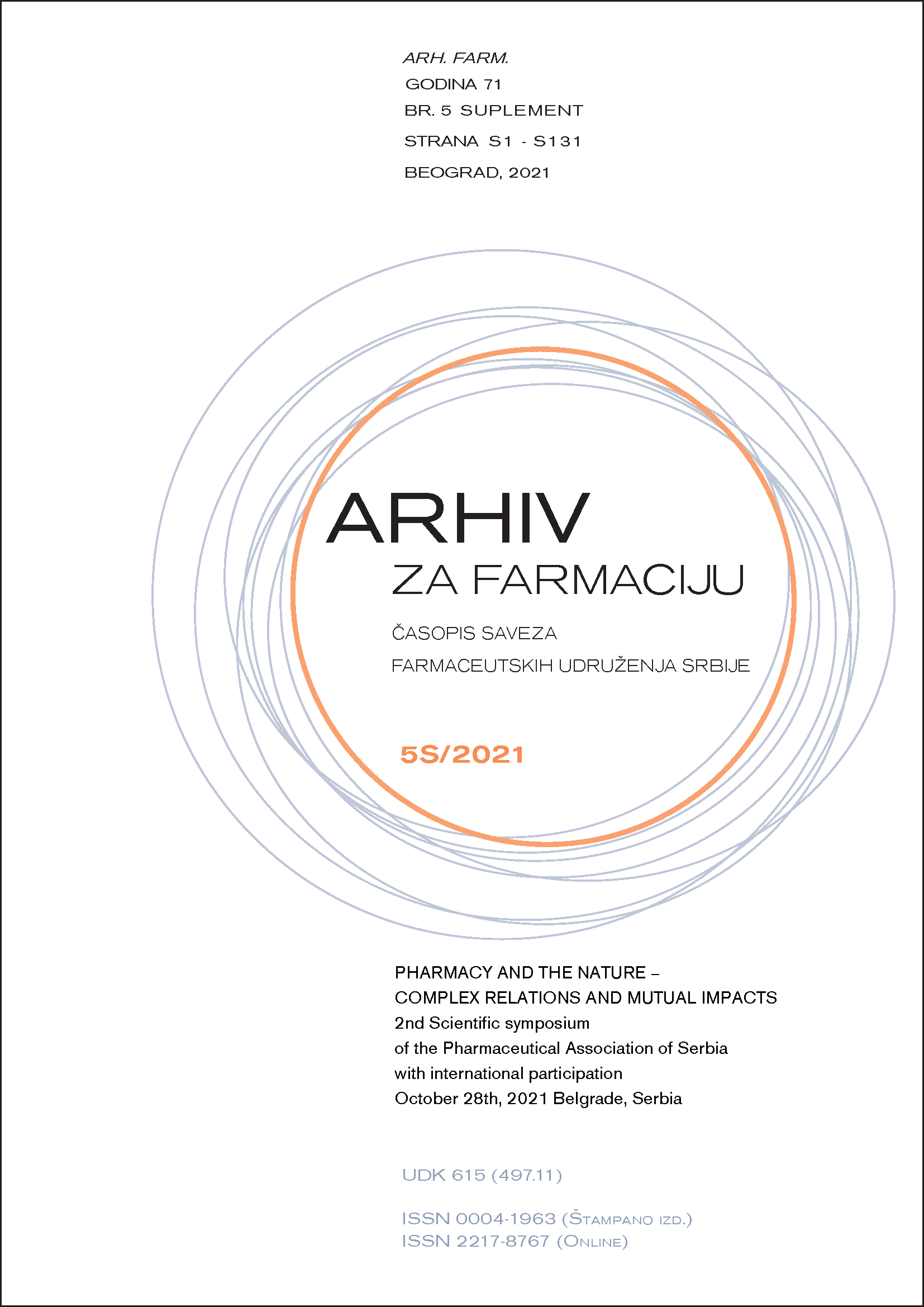INVESTIGATION OF POLYPHENOLS, FURANOCOUMARINS AND ANTIOXIDANT ACTIVITY OF LEAF AND FLOWER EXTRACTS OF HERACLEUM SIBIRICUM (APIACEAE)
Abstract
Siberian cow parsnip, Heracleum sibiricum L. (Apiaceae), is autochthonous to northern, eastern and central Europe, Balkan Peninsula and Siberia (1). Infusion prepared from aerial parts of this plant is used in folk medicine on Balkan Peninsula as aperitif and to treat diarrhea and other gastrointestinal complaints (2). Previous studies of H. sibiricum have not included polyphenol analysis, while furanocoumarins were analyzed in roots, fruits and leaves (1, 3).
In this work, chemical composition and antioxidant activity of methanol and dichloromethane extracts obtained from leaves and flowers of this plant were investigated.
Dried plant material, collected on Mts Stara Planina (Serbia) in July 2014, was extracted successively with dichloromethane and methanol (in both cases by bimaceration 72+48 h; drug/solvent=1:10 w/V). Solvents were removed under reduced pressure. The composition of obtained dry extracts was analyzed by LC-MS methods. Additionally, for methanol extracts, total phenolics contents were determined spectrophotometrically using Folin-Ciocalteu reagent. Antioxidant activity of methanol extracts was tested by spectrophotometric FRAP and DPPH assays, and of dichloromethane extracts by DPPH assay.
LC-MS analysis showed that investigated leaf and flower dry methanol extracts were very similar. In both extracts, significant amounts of quercetin and kaempferol glycosides (154.30 and 144.20 mg/g of dry extract) were determined. Dominant were vincetoxicoside A (quercetin 7-O-rhamnosyl 3-O-glucoside; 26.83 and 29.61 mg/g), kaempferitrin (kaempferol 3,7-di-O-rhamnoside; 33.62 and 34.68 mg/g) and one quercetin deoxyhexosyl deoxyhexoside (69.06 and 79.91 mg/g). Six more glycosides of these flavonols were detected in the leaf extract and five more in the flower extract. Also, chlorogenic acid (19.31 and 4.12 mg/g) was identified in both extracts. Spectrophotometrically determined total phenolics contents were 126.08 and 125.33 mg gallic acid equivalents/g.
In the leaf dry dichloromethane extract, by LC-MS method, small amounts of furanocoumarins isopimpinellin and bergapten were detected (totally 0.22 mg/g of dry extract). Their presence was also previously shown (3). In the flower extract, besides these two, six more furanocoumarins were identified; all present in small amounts (totally 20.07 mg/g). The most abundant was bergapten (4.84 mg/g), followed by byakangelicol (3.29 mg/g).
Total antioxidant (FRAP values 1.08 and 0.94 mmol Fe2+/g) and antiradical activities (DPPH SC50 values 64.10 and 64.77 µg/mL) of the leaf and flower dry methanol extracts were correlated with their total phenolics contents. Anti-DPPH activities of the dry dichloromethane extracts were expectedly lower (SC50 values 636.19 and 790.20 µg/mL).
Heracleum sibiricum leaves and flowers represent new sources of compounds with known antioxidant activity.

